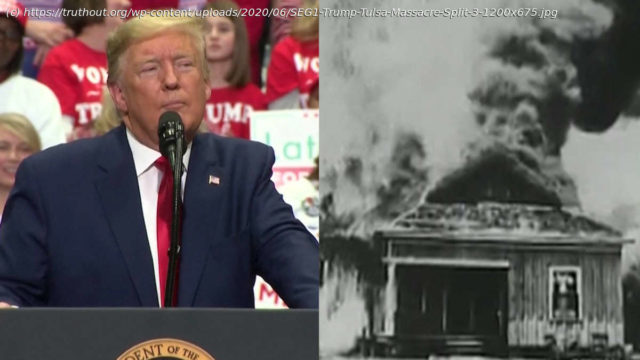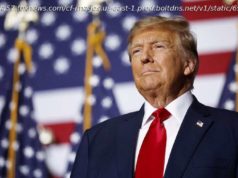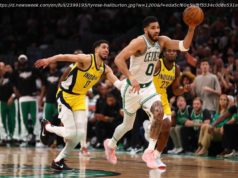In 1921, a white mob killed as many as 300 people in a thriving African American business district in Tulsa.
AMYGOODMAN: We begin today’s show in Tulsa, Oklahoma, where President Donald Trump will host a massive indoor campaign rally Saturday, despite concerns that the gathering will lead to a surge in COVID-19 cases in a state where the virus is already alarmingly on the rise. The Centers for Disease Control and Prevention reported Oklahoma has seen a 7.7% increase in COVID cases — the largest in the country.
Tulsa’s health director said he wished the president would postpone the rally, the first since the outbreak of the coronavirus in the U. S. in March, due to concerns about the virus. The mayor has also said he doesn’t want it there now. Two Oklahoma lawyers have sued in an attempt to halt the rally, saying the event will endanger the Tulsa community.
Despite public health experts’ warnings against large indoor gatherings, the Trump administration is moving forward with plans to fill the 19,000-seat arena for the rally, with tens of thousands more in the nearby convention center. Vice President Mike Pence, who will attend the rally, falsely claimed that, in a very real sense, Oklahoma had flattened the curve of COVID infections. This is Trump speaking Monday.
PRESIDENTDONALDTRUMP: Oklahoma’s at a very low number. They’ve done really fantastic work. They have a new — a pretty new, magnificent arena, as you probably have heard. And we’re getting exact numbers out, but we’re either close to or over 1 million people wanting to go. We have a 22,000-seat arena, but I think we’re going to also take the convention hall next door, and that’s going to hold 40,000. So we’ll have 22,000 plus 40,000, which would mean that we’d have over 900,000 people that won’t be able to go, but hopefully they’ll be watching.
AMYGOODMAN: The Trump campaign is requiring attendees to his rally to sign a waiver absolving the campaign of liability if an attendee contracts COVID-19, but they are not requiring the attendees to wear masks, in contravention of the CDC.
This comes as President Trump also faces outrage for choosing Tulsa, Oklahoma, as the location of his first rally amidst the nationwide uprising against racism and police brutality. The Trump administration rescheduled the rally to Saturday after originally announcing it would be held this Friday. That’s June 19th, or Juneteenth, a celebration of African Americans’ liberation from slavery.
But Tulsa is also the site of one of the deadliest massacres in U. S. history. In 1921,99 years ago this month, a white mob attacked a Black neighborhood in Tulsa, killing as many as 300 African Americans. Over two days, white mobs set fire to homes, businesses and churches in Greenwood, a thriving African American business district known at the time as “Black Wall Street.” When the smoke cleared, the area lay in ruins.
This is an excerpt from the History Channel documentary The Night Tulsa Burned, which features some of the survivors who were just children when the attack occurred. This is George Monroe, followed by Juanita Burnett Arnold and Ernestine Alpha Gibbs.
GEORGEMONROE: I will always remember four men coming in our house with torches, and my mother saw them coming, and she put the four of we children under the bed. And from under the bed, we could see them walking to the curtains and setting fire to the curtains to set our house on fire.
JUANITABURNETTARNOLD: We start hearing shots. And my grandfather told us all to get up. And we got up, and we could see smoke and hear — hear shots. And we couldn’t sleep or anything. We were just frightened nearly to death.
ERNESTINEALPHAGIBBS: As soon as daylight came, we looked outside. All of these people were coming down this railroad track. Didn’t nobody try to take a thing. And those people were coming along one track. They just had clothes on. That’s all. They didn’t try to take anything.
AMYGOODMAN: For more, we go to Tulsa, Oklahoma, where we’re joined by Hannibal Johnson, attorney and author of several books about the history of Tulsa’s African American community, including Black Wall Street: From Riot to Renaissance in Tulsa’s Historic Greenwood District, Up from the Ashes and Images of America: Tulsa’s Historic Greenwood District.
So, if you could start, Hannibal Johnson, by talking about what happened 99 years ago this month?
HANNIBALJOHNSON: What happened in Tulsa in 1921 was really emblematic of the racial violence that pervaded the United States during that period. In fact, historians and sociologists refer to the early part of the 20th century as the nadir of race relations in America, the low point of race relations in America, because of the proliferation of these so-called race riots — mostly invasions of Black communities by vigilante white mobs — and because of the prevalence of lynching, lynching being a form of domestic terrorism targeting primarily African Americans.






